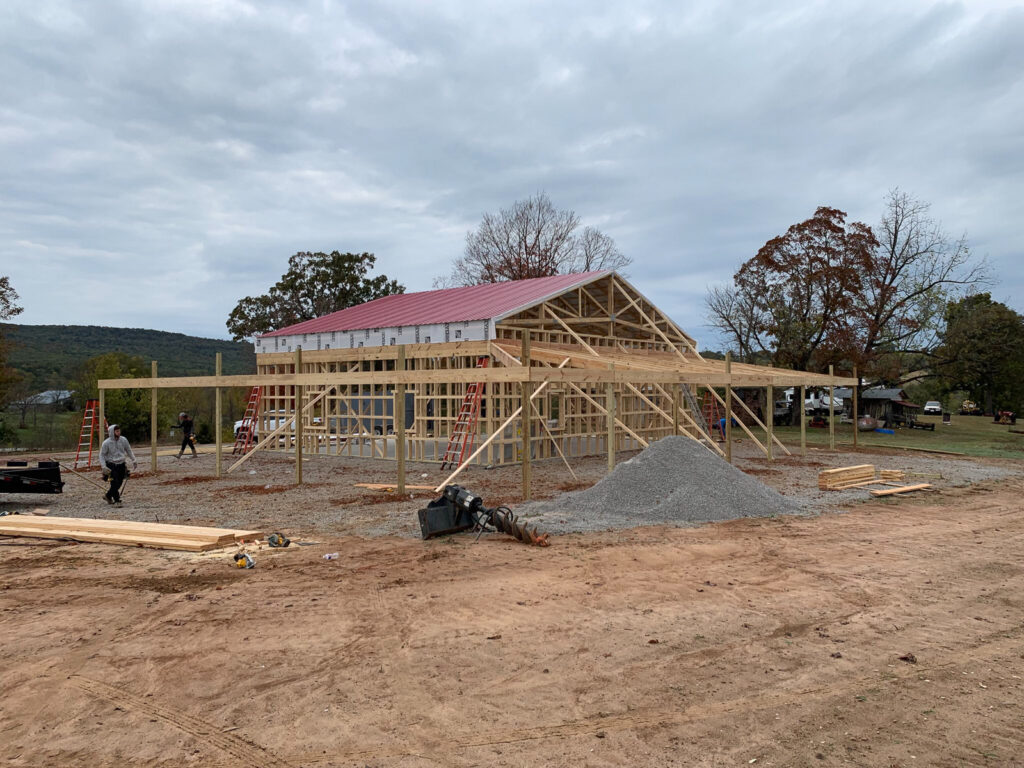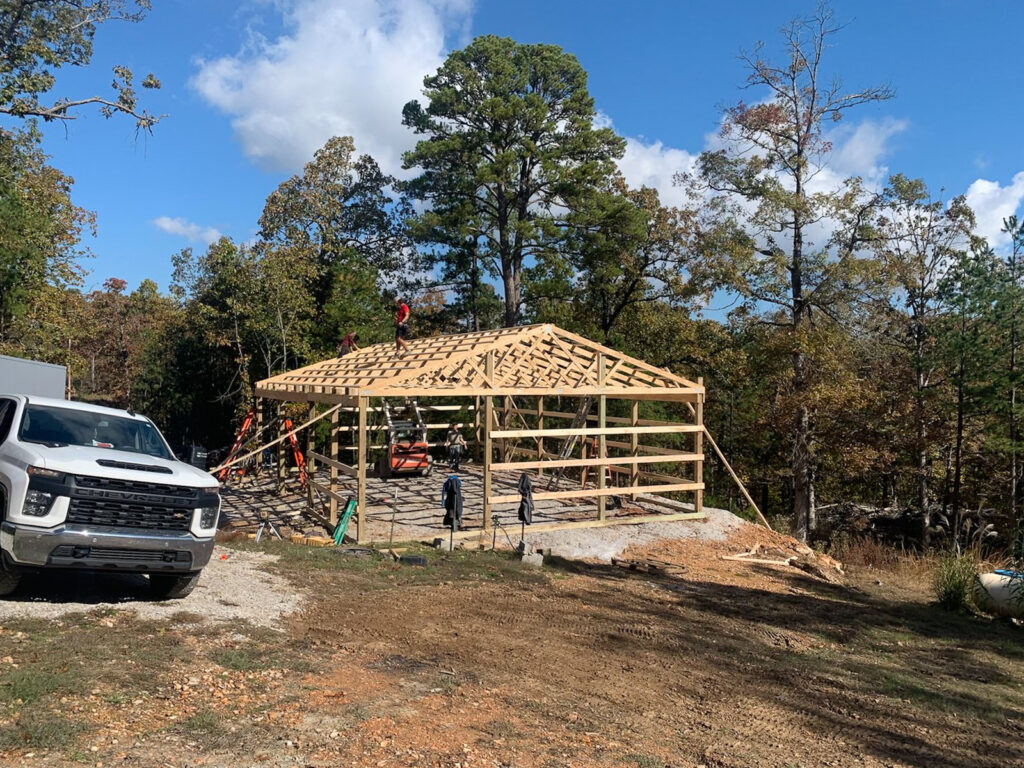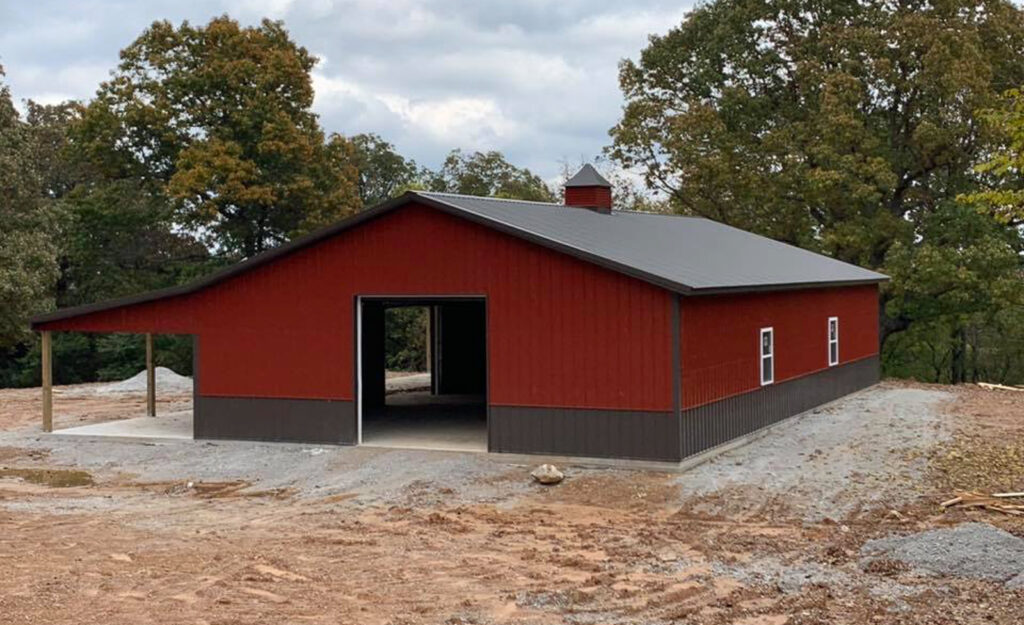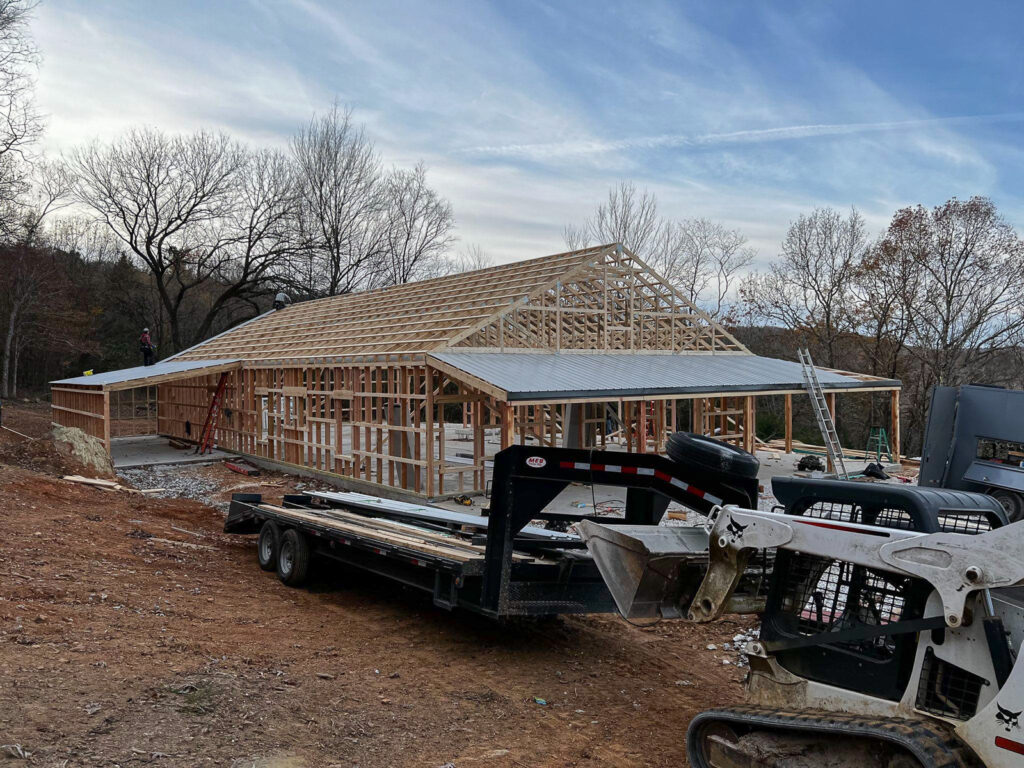When it comes to new building construction there are two primary framing options: wood framing and steel framing. Both materials have their advantages and disadvantages. In this blog post, we’re going to take a closer look at these two framing options and discuss why we think wood framing is often the better option.
What is Wood Frame Construction?
Wood frame construction is a common building method that utilizes wood for the primary support structure of a building. This includes elements such as wood studs, floor joists, roof trusses, and beams. These wood elements are joined together using nails, screws, or other wood-specific fastening methods. A wood frame is then covered with siding and roofing materials on the outside and often drywall or lumber panels on the interior. Wood frame construction is a popular framing method that has been used for centuries and is well-suited for a wide range of building types, including homes, post-frame structures like shops and garages, and even commercial or agricultural structures.
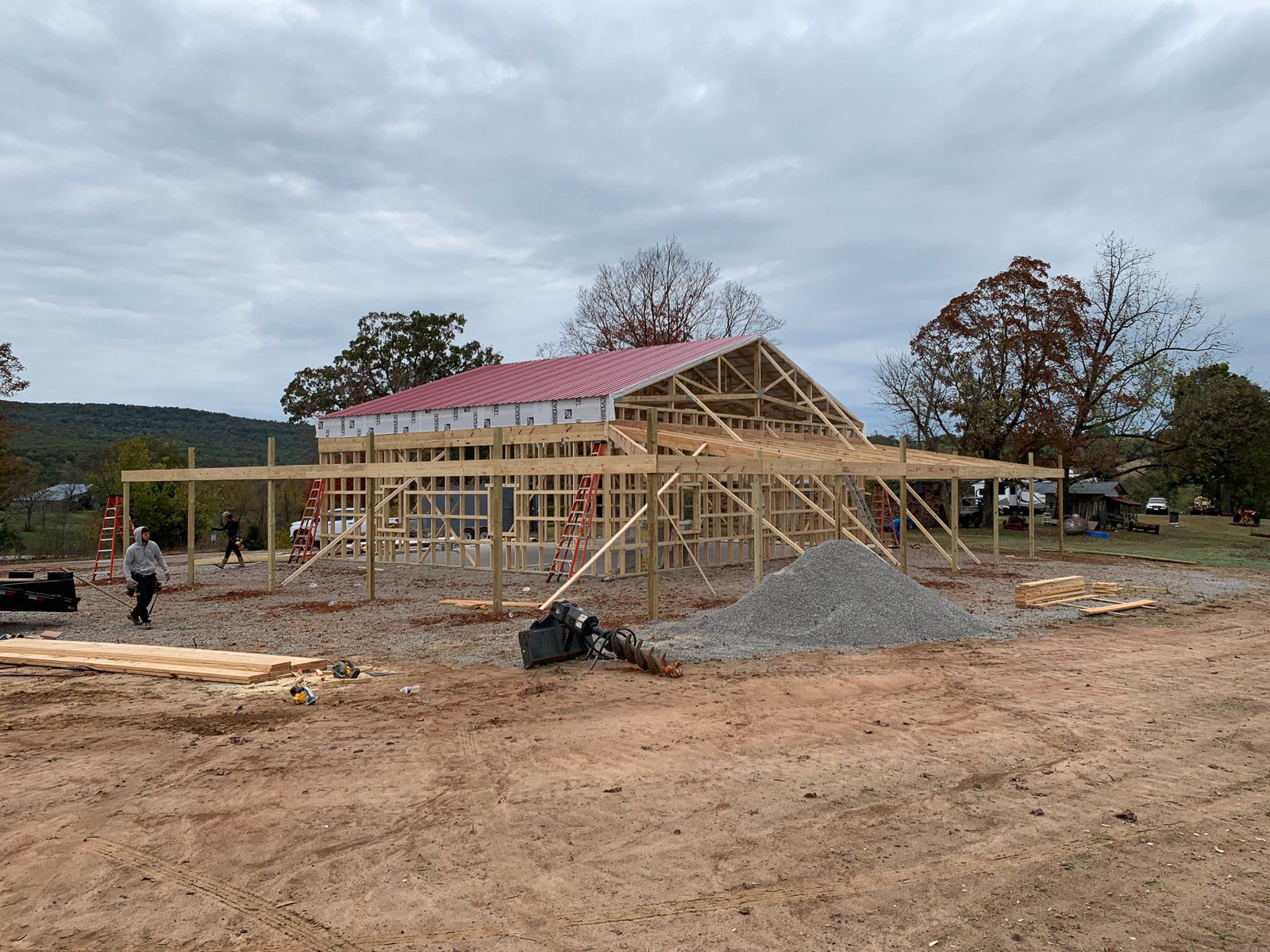
What is Steel Frame Construction?
Metal frame construction is a building method that uses steel components, such as steel beams, steel columns, and steel trusses, to create the structural frame of a building. These components are most times manufactured in a factory and transported to the construction site where they are assembled. Metal fasteners like bolts and screws are used in assembly and the frame can be covered with a variety of materials for the interior and exterior surfaces. Most often metal framing is used in commercial or agricultural applications but can be used as well for residential structures
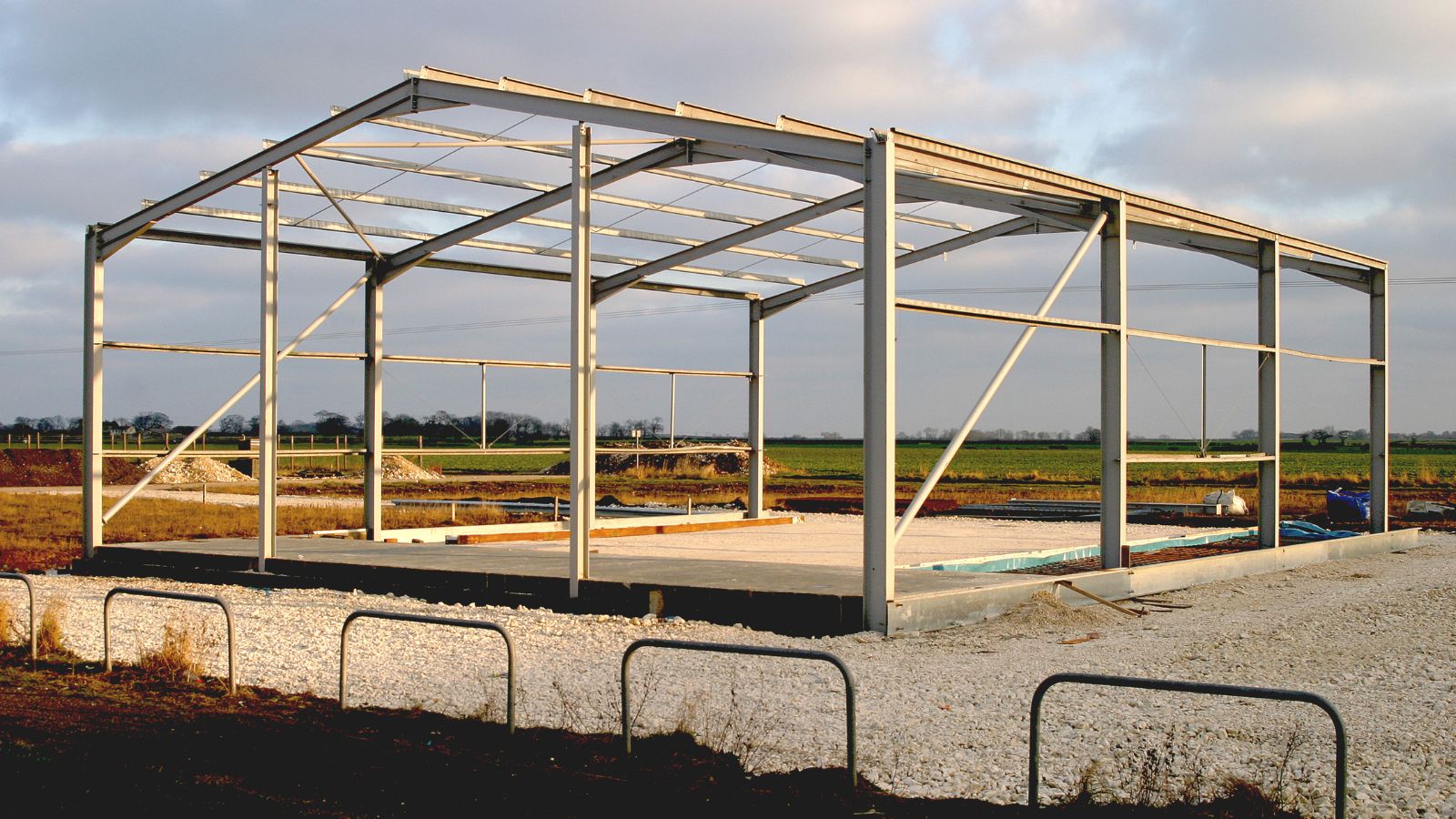
So now that we’ve discussed what wood frame and steel frame construction is, let’s list the pros and cons of these construction methods.
Pros of Wood Frame Construction
Easy To Finish Out the Interior
Generally wood-frame construction comes with studs every 16” or 24” on the walls, making it easy to add insulation and wall linings, like sheetrock or wood panel siding. If you have any plans to finish out the interior of your building, wood frame construction is definitely the easier option that provides more flexibility.
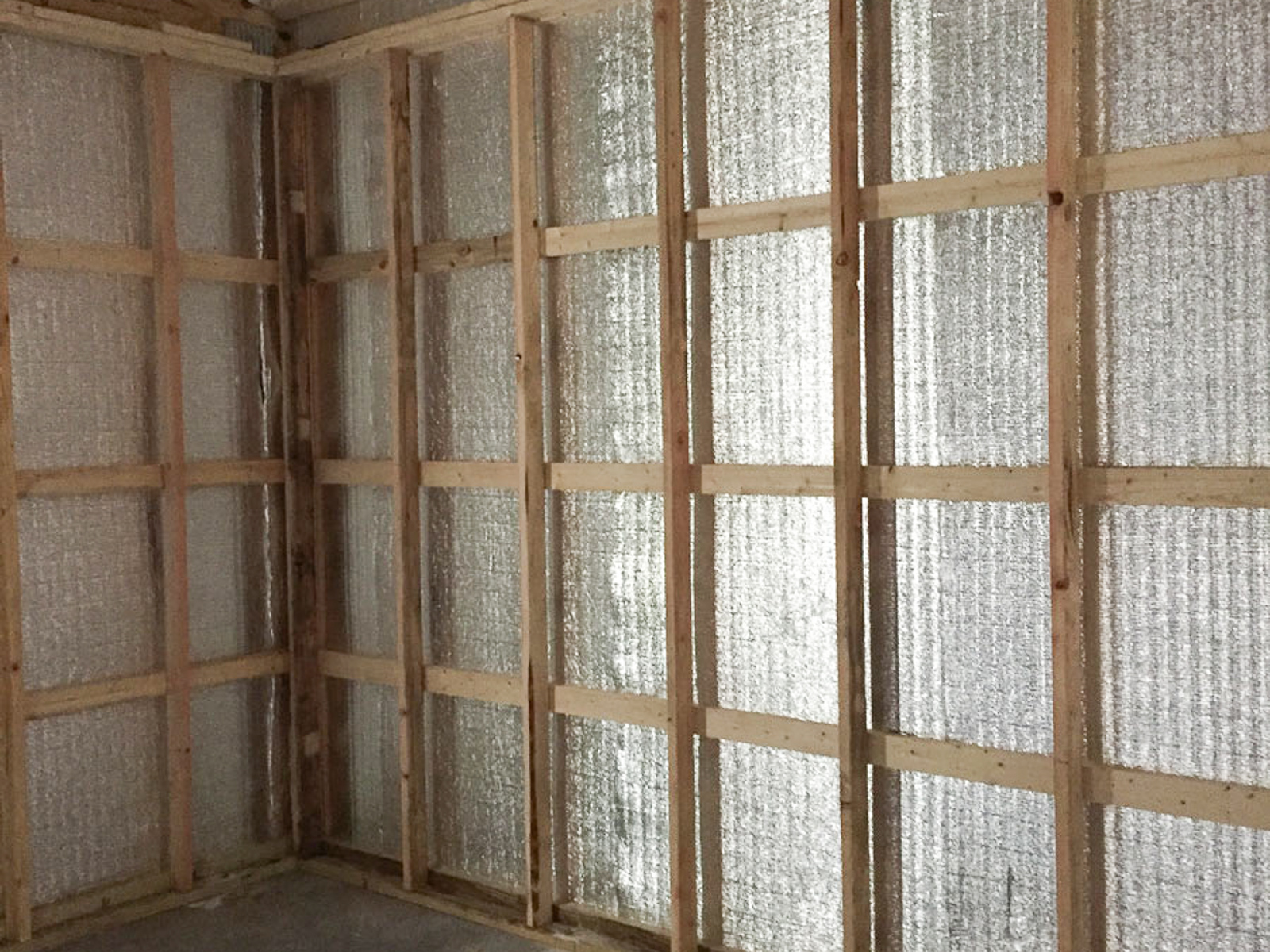
Easy To Make Changes
If you’ve ever been involved in a large building project, you likely know that the project seldom stays identical to the original plans as it is built. The beauty of wood frame construction is that it is much easier than steel framing to alter and changeup during or after the building process. Wood is easy to cut, reframe, and build around. Metal requires torching and welding to alter a project.
Cost Effective
Wood framing will usually beat steel framing in material pricing. This is especially true recently now that lumber prices have come down significantly from their high prices over the last few years and steel prices have remained high.
Aesthetically Flexible and Appealing
Wood Frame construction generally is the most flexible option when it comes to design and style. While we know that “beauty is in the eye of the beholder” with building styles, we think that wood frame buildings tend to be prettier and less likely to feel “cookie-cutter” due to the flexibility of finishing options available.

Energy Efficient
Wood material is a better insulator than steel and is easier to insulate around. With wood framing you can easily add in insulation panels and attach it to the wood studs and trusses with staples. If you’re worried about insulation and temperature control, wood framing is definitely a better option.
Cons of Wood Frame Construction
Wood frame construction doesn’t inherently have a lot of cons to it. The quality and durability of the build largely depend on the quality of materials used and the experience and attention to detail that the builders provide.
One of the primary cons of wood frame construction is that they are more susceptible to termites and mold than steel framing is. However, a well constructed building that is maintained well shouldn’t have mold issues and proper care should negate the possibility of termites as well.
Wood frame construction is also obviously more flammable than steel framing so in the case of fire, structural damage is more likely to occur.
Pros of Metal Frame Construction

Strength
The general perception of steel construction is that it is stronger than wood construction. And rightfully so, because steel is an incredibly strong and durable material. So it may be accurate to say that steel construction is stronger than wood. However, wood construction can basically be as strong as you make it to be. With quality engineered wooden trusses, you can build them to whatever specification you need. Both wood and metal construction can be constructed to meet any snow or wind requirements that is called for by your building codes.
Mold, Rot, Termite, and Flame Resistant
Metal framing is very resistant to termites, mold, and rot, making it a bit more appealing than wood construction in that regard. It also is not as flammable as wood construction.
Cons of Metal Frame Construction
Rusts easily
While metal framing may not rot or mold as easily as wood, it is much more susceptible to rust and over time its strength can be compromised through rust issues.
Costs More
Generally, metal framing is more expansive than wood and the engineering process has to be more rigorous since it all needs to be designed and prefabricated beforehand. This makes so that any modifications or remodel will also be more costly and time-consuming.
Harder to Finish Out Interior
As we’ve mentioned previously, metal framing is not as conducive to interior finishing and buildout as wood framing. Generally, you will need to build out with wood strips or wood framing over the metal frame in order to add in wall finishing like sheetrock or wood siding. Fastening insulation is also more complicated with metal framing.
So that is a basic overview of metal framing vs. wood framing construction. Hopefully it has been helpful to you as you weigh your construction options. Admittedly we may be a bit biased toward wood framing since that is the type of construction we offer. But, we offer that because we believe it is the superior method. With multiple generations of construction experience in our family to backup our opinions, we feel justified in recommending wood framing over metal framing.
Photos of Our Wood Framed Building Projects
